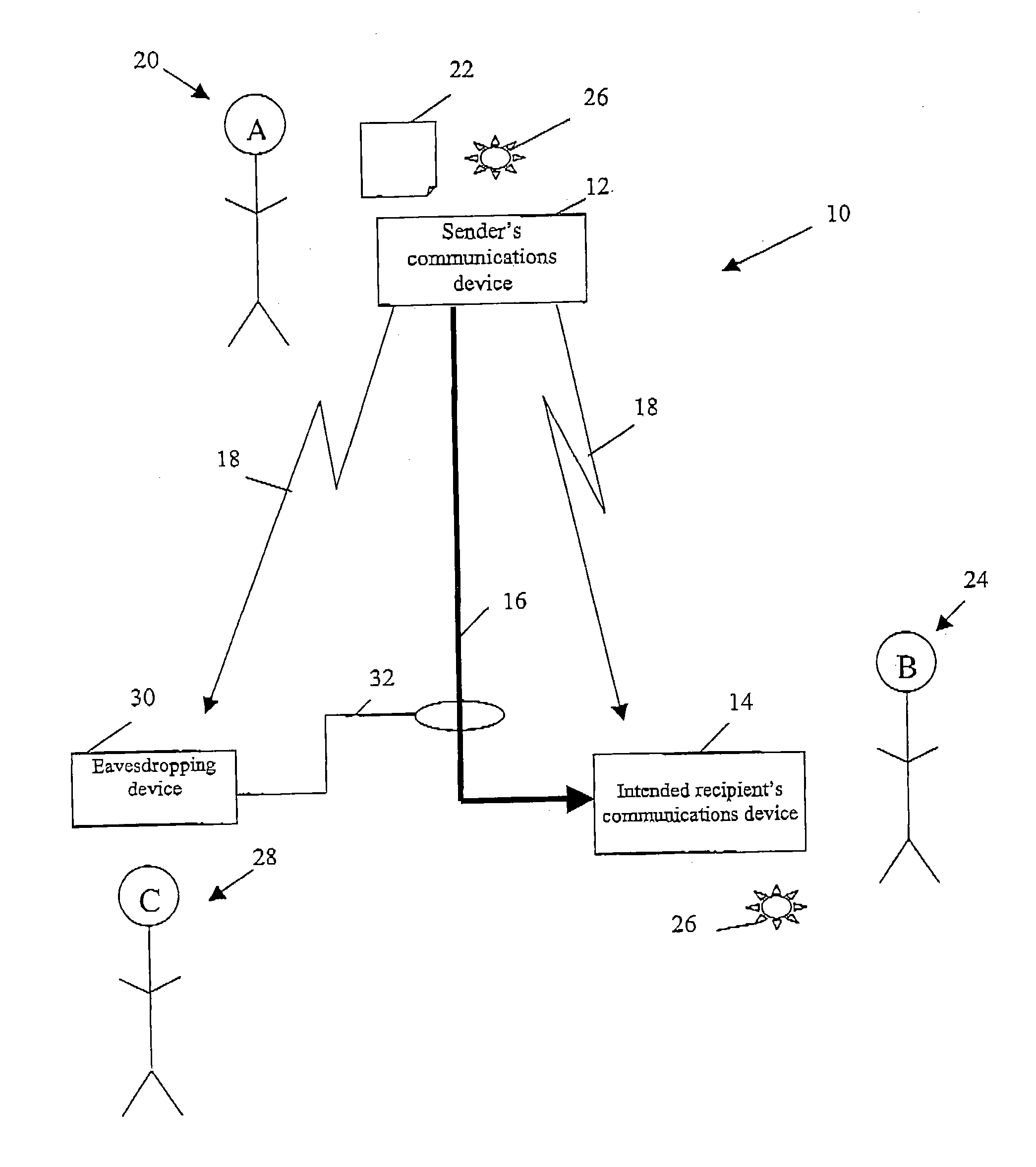Quantum cryptography
a cryptography and quantum technology, applied in the field of quantum cryptography, can solve the problems of limiting the access to transmitted information, the recipient can correctly, and the sender and recipient have no way of ensuring that they can be certain
- Summary
- Abstract
- Description
- Claims
- Application Information
AI Technical Summary
Benefits of technology
Problems solved by technology
Method used
Image
Examples
Embodiment Construction
Referring to FIG. 1, there is shown a communications system 10 according to a first presently preferred embodiment of the invention. The system comprises a sender's communications device 12 and an intended recipient's communications device 14. These devices are, in this embodiment, arranged to support quantum communications that is respectively to send and receive photons that are each in a specified quantum state due to their particular polarisation. The devices 12, 14 are connected together via an optical fibre telecommunications link 16 which acts as a quantum communications channel. The sender's communication device 12 is also arranged to broadcast radio signals 18 over a public channel which can be received by the recipient's communications device 14.
The sender (A) 20 has, at his communications device 12, a secret document 22 that he wishes to send in an encrypted format to the recipient (B) 24. The actual encrypted document is sent as encrypted radio broadcast signals 18 to...
PUM
 Login to View More
Login to View More Abstract
Description
Claims
Application Information
 Login to View More
Login to View More - R&D
- Intellectual Property
- Life Sciences
- Materials
- Tech Scout
- Unparalleled Data Quality
- Higher Quality Content
- 60% Fewer Hallucinations
Browse by: Latest US Patents, China's latest patents, Technical Efficacy Thesaurus, Application Domain, Technology Topic, Popular Technical Reports.
© 2025 PatSnap. All rights reserved.Legal|Privacy policy|Modern Slavery Act Transparency Statement|Sitemap|About US| Contact US: help@patsnap.com



